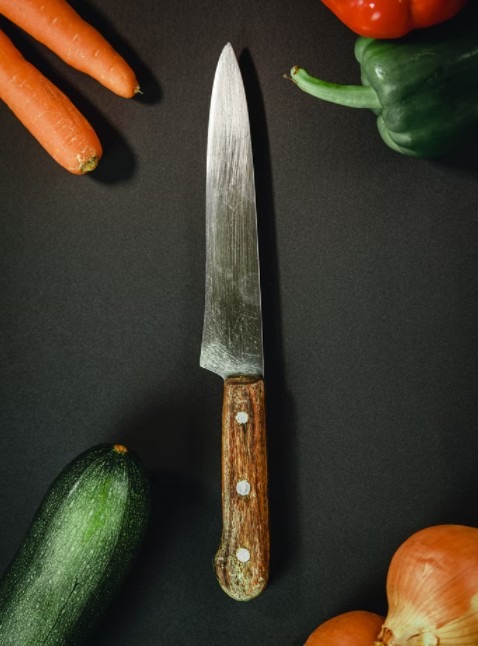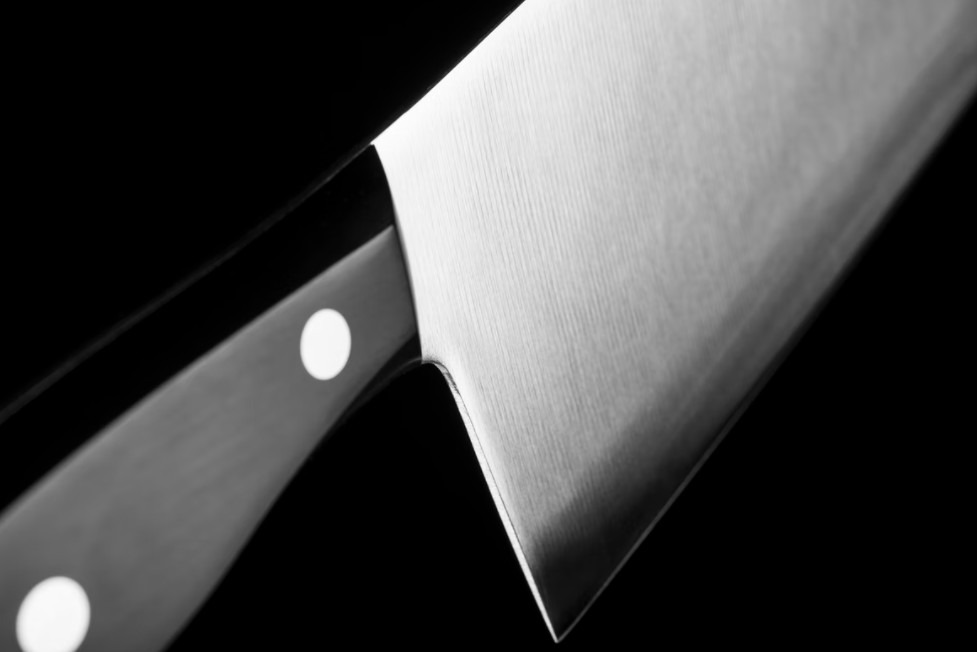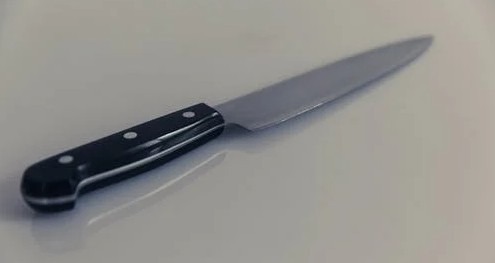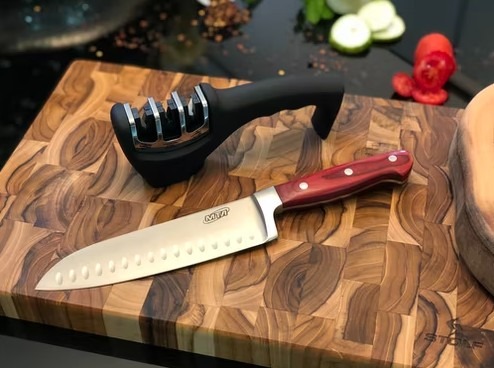A knife is a tool or weapon with a blade and cutting edge, attached to a hilt or handle. It is one of the first tools used by mankind. The use of knives appeared at least 2.5 million years ago, as it comes from Oldovian tools. It was originally made from stones, bones, and wood. Over the centuries, the manufacturing of knives has evolved and now they are made from iron, titanium, ceramic, steel, copper, and bronze.
The style or pattern varies from country to country or manufacturer. Also, there are various purposes of knives such as hunting knives, combat knives, hikers, pocket knives, etc. Talking about stamped knives; they are made from continuous stainless-steel sheets. As it gets it from its name, the blade of a stamped knife is heat-treated or stamped for durability. Also, they are lighter in weight than any other type of knife.
What Are Stamped Knives?
Rather than starting with a single bar of steel, stamped knives usually start with a large steel blade. The blades are laser cut or stamped from the blade just like a cookie cutter on a sheet of dough. The process makes the mass production of kitchen knives cheaper and easier.
The manufacturing method of stamped knives is preferred over forged or other knives. As a result, affordable kitchen and cooking knives are manufactured for daily purposes.
Manufacturing of Stamped Knives
The stamped knife is manufactured as follows:
- The blade of the stamped knife is programmed into a machine.
- The large sheets of metal are placed in a cutter.
- The cutter cuts out the stamped knives from a large metal sheet.
- Then the knives are soaked.
- To increase the durability and strength of the stamped knives, the blades are sharpened.
- The sharp blades are then attached to the handles.
- Then the knives are cleaned and inspected to ensure the quality before they are packaged for sale.
The sheets used in the stamped knives are flexible and thinner than the forged blades. Also, the streamlined and machine-driven manufacturing process allows the companies to produce knives at a lower cost resulting in affordable knives for daily kitchen use.
Characteristics of Stamped Knives
| Manufacturing Process | Tempered and Laser-Cut |
| Blade Thickness | Thinner Profile |
| Bolster | No Bolster |
| Tang | Partial or Half Tang |
| Weight | Lightweight |
| Sharpness | Very Sharp |
| Edge Retention | Loses Edge Faster |
| Ease of Sharpening | Harder |
| Price | $$ |
Blade Thickness
The thickness of the blade depends on the metal alloy or block being used in the manufacturing process. The stamped knives come from thin metal sheets. As a result, they give a uniform thickness from the blade to the handle.
Bolster
A bolster is a thick piece of metal that rests between the handle and blade. It strengthens the knife and helps to prevent slipping. In stamped knives, the uniform thickness of the blade does not require a bolster. Even without a bolster, a stamped knife provides a better grip and prevents slipping.
Tang
A tang is the part of the blade that extends to the handle. If the blade goes through the rear end, then it is known as a full tang. Half or partial tang, on the other hand, goes through the handle or sometimes halfway. The more the tang, the more the knife is balanced and strengthened. Also, the tang adds to the weight of the knife, so stamped knives come with a partial or half tang.
Half or partial tang in stamped knives is to keep the balance while preparing food. A heavy knife can give you aching hands after a few minutes of chopping. This is why most home chefs use stamped knives.
Weight
Several factors add to the weight of the knife such as bracing, handle material, blade thickness, etc. The stamped knives are lighter in weight than other types of knives because they don’t have a bolster. Also, they are not made from thick blocks of metal. In addition, the lightweight of the stamped knives comes from the partial or half tang.
The lightweight of the stamped knife makes it perfect for prepping foods like mushrooms or onions.
Sharpness
When it comes to sharpness, the smaller the angle, the sharper will be the edge. The angle of edge per side can vary from 10 to 20 degrees. In some knives, the average edge angle can be 16. In stamped knives, the edges of the blade are small which makes it sharp.
The sharpness of stamped knives makes them perfect for cutting vegetables and fruits or any soft foods. If they are pushed too hard, they might get damaged or chip. The stamped knives are perfect for delicate slicing and light chopping, especially when you want to have precise or extremely thin cuts. Also, the uniform thickness of the stamped knife does not push against the food cut.
Blade Flexibility
Knives, other than stamped knives, come with a rigid blade. Rigid blades are perfect for chopping herbs and vegetables and cutting meat. It is because in such chopping you need a controllable knife. Also, the stiffer blades are easier to sharpen with a whetstone.
Stamped blades are less rigid and they provide more stretch when working. The flexibility of the stamped knife blade makes it perfect for making, filleting, or boning sushi.
Edge Retention
The edge retention is based on the manufacturing process of the knife. For example, forged knives go through extreme heat and tempering which makes a hard blade. The harder the blade, the longer the edge retention.
All the knives are just as sharp right out of the box. The difference between different types of knives is the way they hold their edges. In general, other knives such as forged knives hold their cutting edges longer than stamped knives. Hence, you have to sharpen the stamped knife more often.
Ease of Sharpening
There are different ways to keep your knives sharpened. The manual sharpening of the blade requires a stiff or rigid blade such as forged knives. In the case of stamped knives, the blades are flexible which makes it difficult to sharpen them manually. On the other hand, if you are using an electric sharpener, the blade of a stamped knife can be sharpened easily.
Stamped Knives – Lightweight And Thinner Blade Profile Knives
Stamped knives made from continuous stainless-steel sheets or knife steel are lightweight and durable. The thin blade, no bolster, and half or partial tang make stamped knives lighter than forged or any other type of knives. The blade flexibility of the stamped knife makes it perfect for thin and precise cutting of food, especially while making sushi.
Everything comes with some drawbacks, the same is with stamped knives. The thin and flexible blade makes it difficult for the stamped knives to keep the edges. As a result, you have to sharpen the stamped knife more often. The blade of a stamped knife cannot be manually sharpened but it requires an electric sharpener for ease of sharpening.







